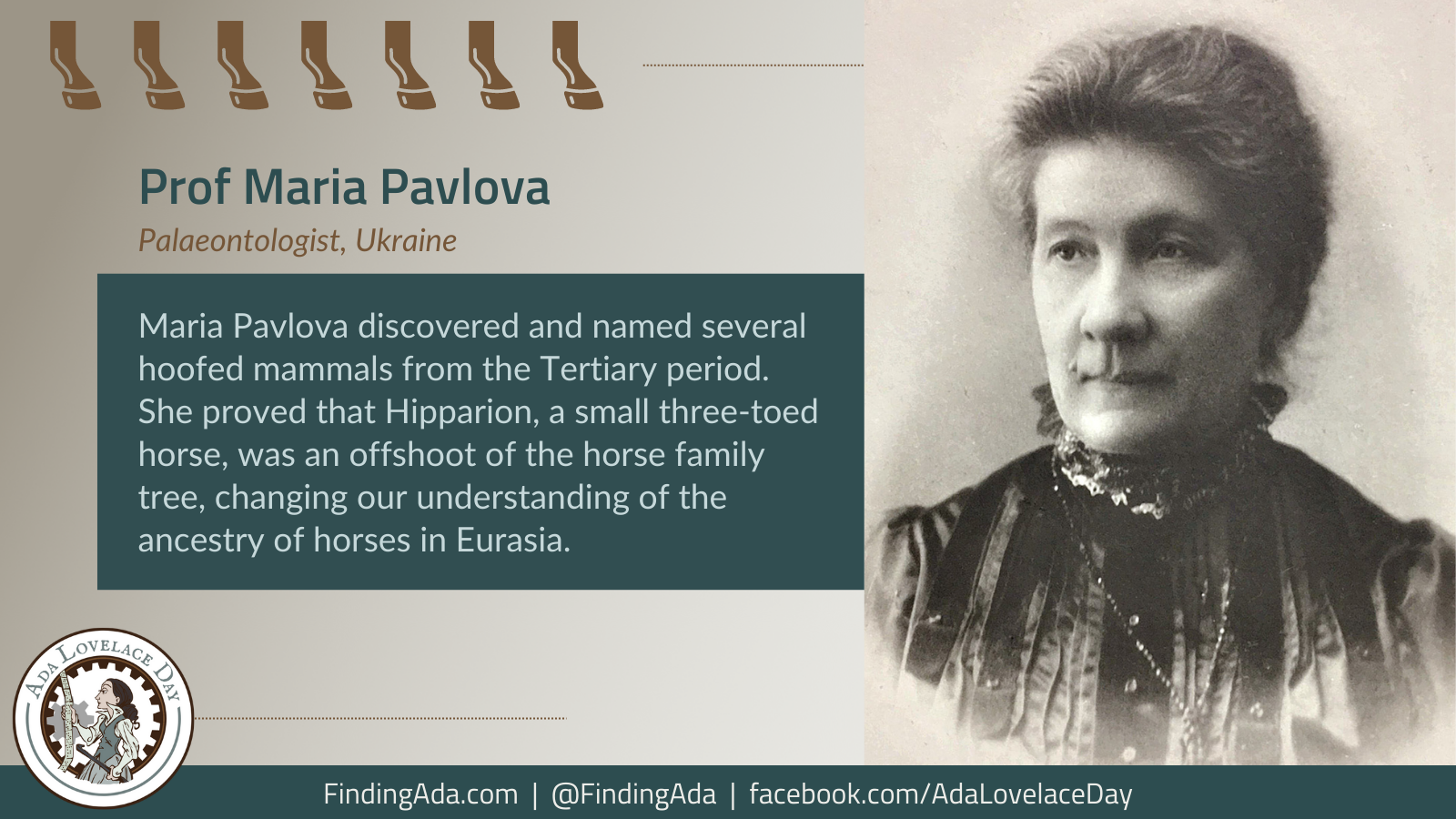
Professor Maria Pavlova
Maria Vasilievna Pavlova, Мария Павлова, was a palaeontologist who discovered several hoofed mammals from the Tertiary period and changed our understanding of the ancestry of horses in Eurasia.
Born in 1854, from age 26, Pavlova studied natural history at the National Museum of Natural History in Paris and the Sorbonne, graduating in 1884.
After graduation, she moved to Moscow where she began studying the geological collections held by the Moscow State University, where she worked for 30 years. She would go on to establish the Museum of Palaeontology there.
Pavlova began her career writing papers on Early Cretaceous ammonites from the Volga region before moving on to Tertiary mammal evolution. She travelled widely around Russia and Western Europe, studying museum collections and collecting fossils herself. She named and described several extinct species, including a rhinoceros P. transouralicum.
She also worked on the ancestry of horses, proving that Hipparion, a small three-toed horse, was not the direct ancestor of the modern horse as thought at the time, but an offshoot of the horse family tree. She then focused on ungulates (hoofed mammals) and proboscidians (elephants and their extinct relatives), especially mastodons.
In 1897, she was one of just two women to be invited to join the Organising Committee of the International Geological Congress, which was held in St Petersburg. Between 1887 and 1906, she published nine issues of Studies in the Paleontological History of Hoofed Animals. In 1899, she published a monograph, Fossil Elephants.
She became the head of the department of palaeontology at Moscow State University in 1910, and by 1912, she had collected over 10,000 specimens, which she gave to the university. In 1916, became a doctor of zoology of the Imperial Moscow University, an “extremely rare” rank for a woman.
She became a professor at the Moscow State University, and was instrumental in founding its palaeontological museum. In 1926, the museum was named after her and her husband who was also a geologist and palaeontologist.
Pavlova was the first Ukrainian or Russian woman to become a national and internationally successful vertebrate palaeontologist. In 1925, she was elected as a corresponding member of the Russian Academy of Sciences, and a year later the Geological Society of France awarded her and her husband with a gold medal for their work.
She went on her final geological expedition in 1931, collecting fossil mammoths, elephants and rhinos from the Volyn district of northern Ukraine.
Further Reading
- Maria Pavlova, Wikipedia
- Eduard SUESS’ Letters to the First Russian Woman-Geologist Maria PAVLOVA in the Archive of the Russian Academy of Sciences, Zoya Bessudnova, Jahrbuch der Geologischen Bundesanstalt, December 2006
- Forgotten Women of Paleontology: Maria Pavlova, Ferwen, Letters From Gondwana, 9 April 2021
- Early Ukrainian Women Scientists: Part 1 – From Fossils to the Planets and Back, Hilda Bastian, Absolutely Maybe: PLOS, 27 April 2022